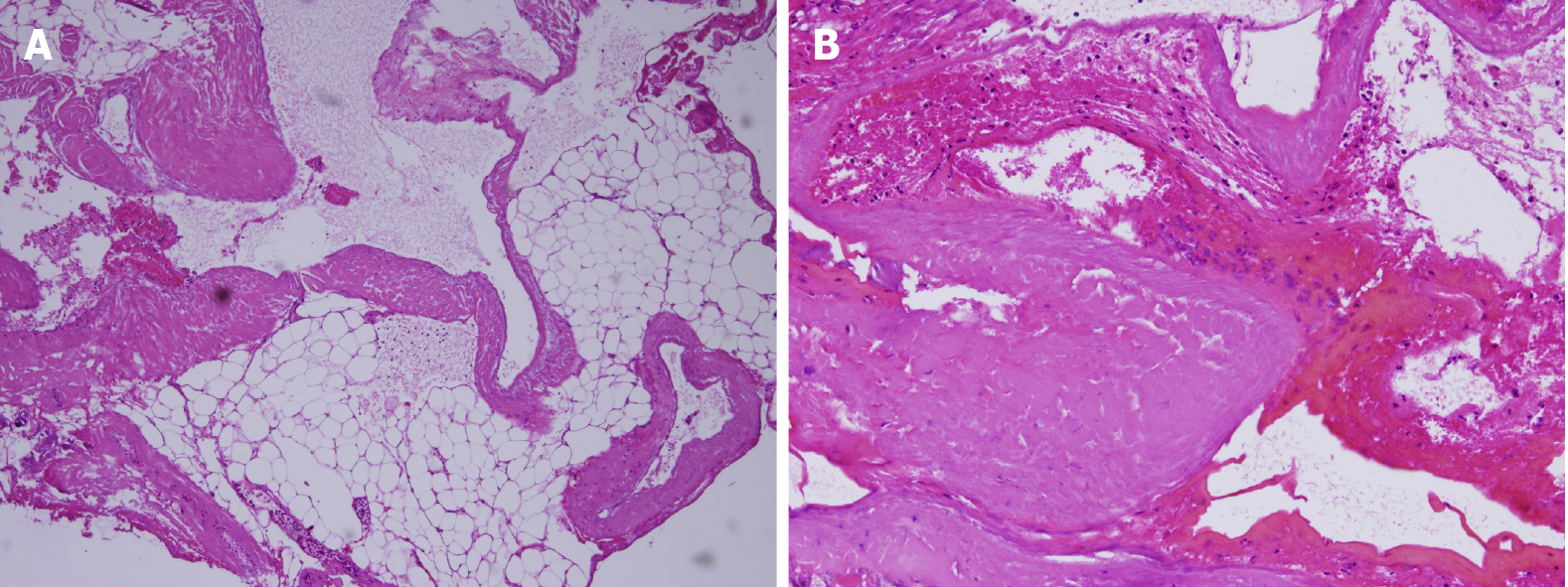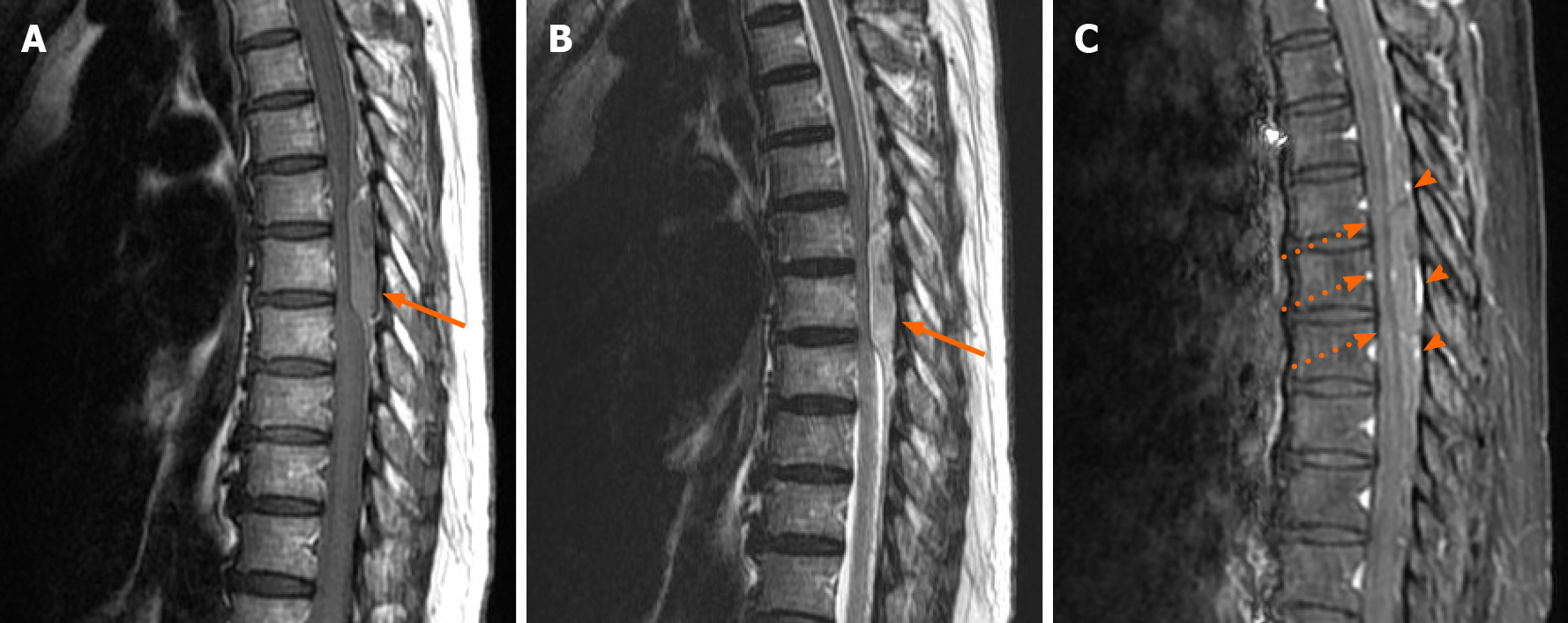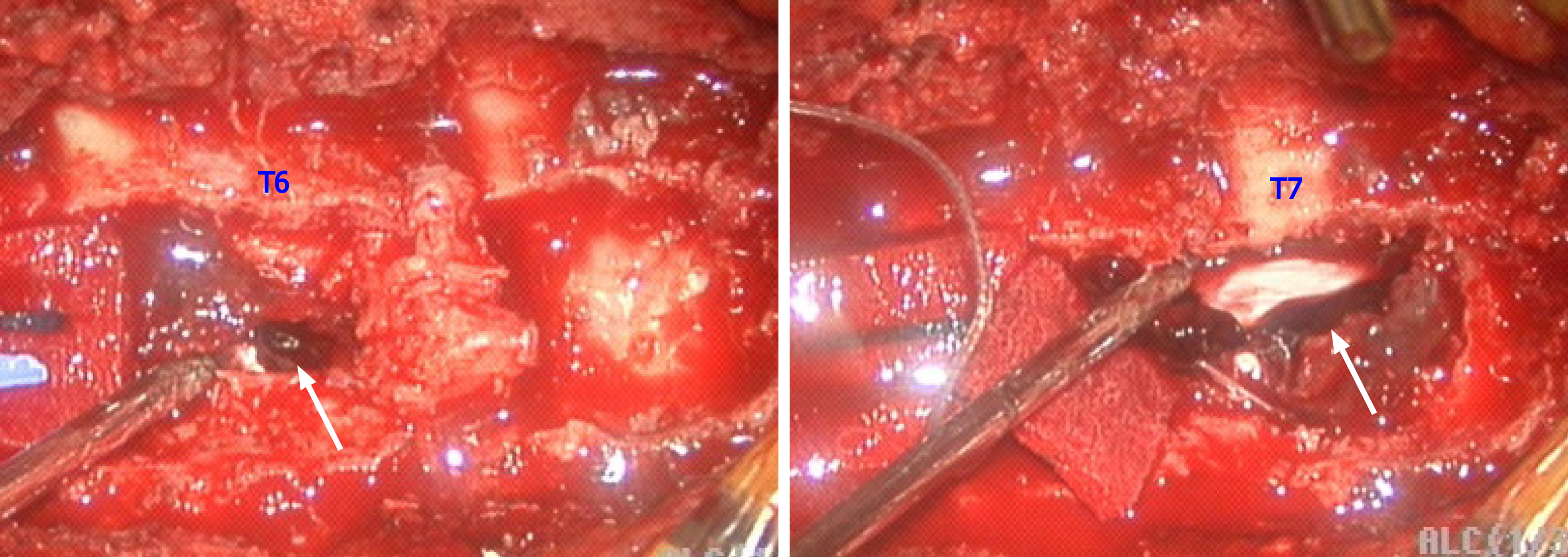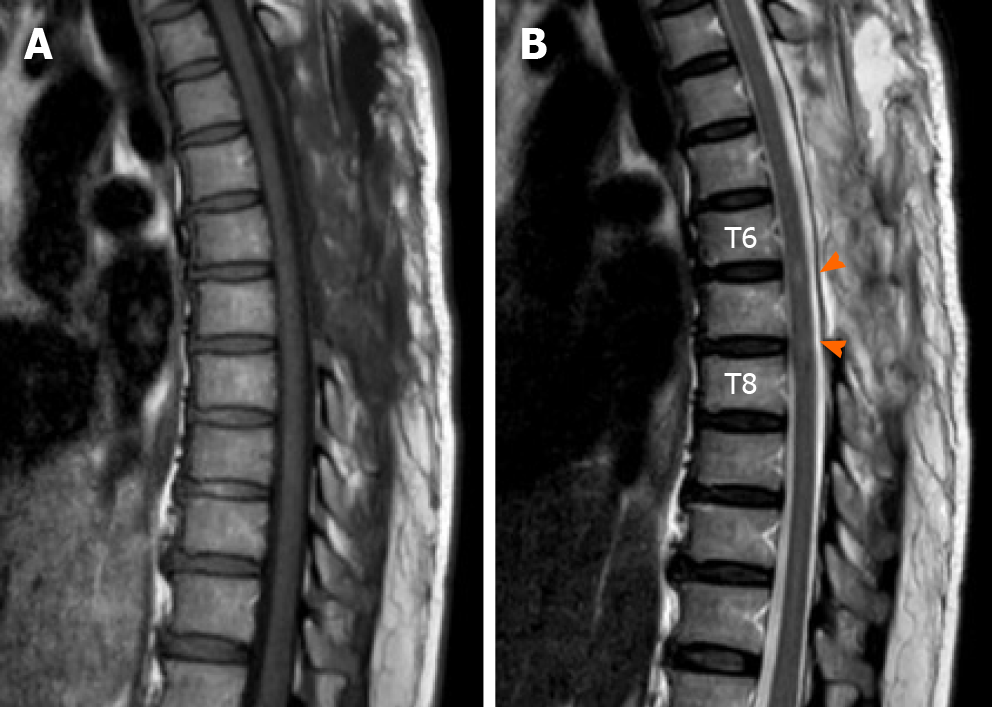Copyright
©The Author(s) 2021.
World J Clin Cases. May 16, 2021; 9(14): 3411-3417
Published online May 16, 2021. doi: 10.12998/wjcc.v9.i14.3411
Published online May 16, 2021. doi: 10.12998/wjcc.v9.i14.3411
Figure 1 Hematoxylin and eosin staining.
A: Proliferation of irregular thick wall vascular channels lined by flat endothelial cells with clear lymphatic fluid in the lumens [hematoxylin and eosin (H&E), 40 ×]; B: Some of the proliferative vessels are filled with blood, instead of lymphatic substance (H&E, 100 ×).
Figure 2 Preoperative spinal magnetic resonance imaging demonstrating an intraspinal epidural hematoma at the T4 to the T8 levels (arrows).
A: Sagittal T1-weighted image (T1WI); B: Sagittal T2-weighted image; C: Sagittal T1WI with enhancement showing mildly thin peripheral enhancement (arrowheads) and the spinal cord is compressed and flattened (dashed thin arrows).
Figure 3 Dark reddish blood (arrows) in the epidural space was exposed after a laminectomy.
Figure 4 After a laminectomy of T5, numerous epidural vessels (arrowheads) were found.
Figure 5 Postoperative spinal angiography shows the artery of Adamkiewicz arising from the right radiculomedullary artery at T10 level.
Figure 6 Postoperative spinal magnetic resonance imaging revealing a faint T2 hyperintense intramedullary signal at the T6-T8 levels (arrow heads) with no residual epidural hematoma and no remaining spinal cord compression.
A: Sagittal T1-weighted image; B: Sagittal T2-weighted image.
- Citation: Chia KJ, Lin LH, Sung MT, Su TM, Huang JF, Lee HL, Sung WW, Lee TH. Acute spontaneous thoracic epidural hematoma associated with intraspinal lymphangioma: A case report. World J Clin Cases 2021; 9(14): 3411-3417
- URL: https://www.wjgnet.com/2307-8960/full/v9/i14/3411.htm
- DOI: https://dx.doi.org/10.12998/wjcc.v9.i14.3411














